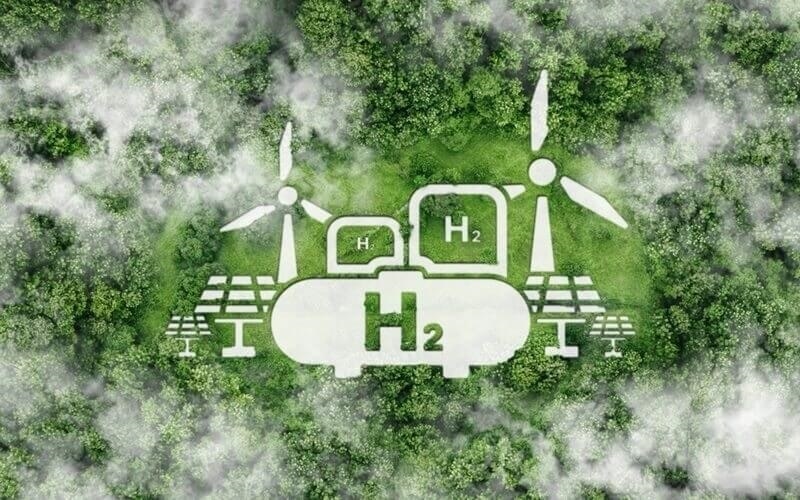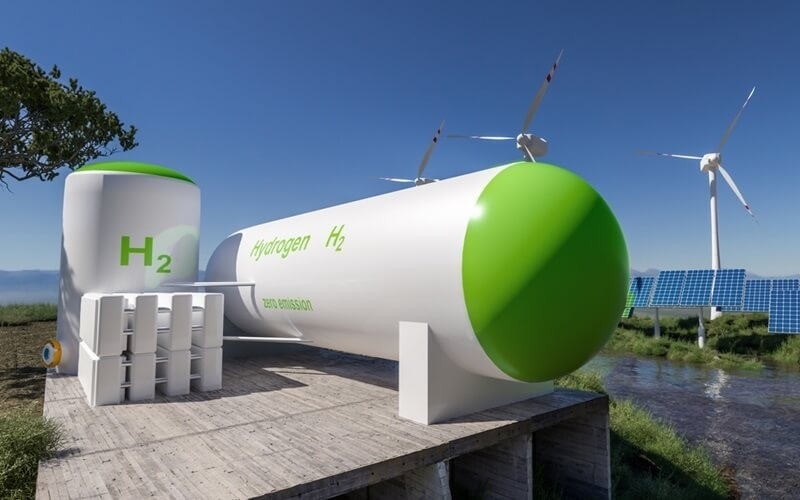
When people talk about the future of clean energy, one phrase keeps coming up: green hydrogen. The world has relied heavily on fossil fuels for more than a century, but that system has hit its limits. Now we’re staring at climate change, energy insecurity, and rising demand all at once. This is where green hydrogen enters the picture. To understand its role, let’s first nail down the green hydrogen definition, then look at how it fits into the bigger energy transition, why minerals matter, and what this shift really means.
Green hydrogen is hydrogen made by splitting water into hydrogen and oxygen using electricity from renewable sources. That’s it. No smoke, no hidden emissions. If the power comes from solar, wind, or hydro, the hydrogen is called green.
Compare that to the old way of making hydrogen, which usually relies on natural gas and leaves behind carbon dioxide. The clean version avoids all that. So when you see the phrase green hydrogen definition, think: renewable electricity + water = hydrogen with no carbon footprint.
Now the obvious question: how is green hydrogen produced?
That’s the science part. But here’s the catch — electrolyzers aren’t cheap, and they need steady renewable power behind them. The tech works; the scale is what we’re still figuring out.
This is why everyone talks about the green hydrogen economy. It’s not just one gadget — it’s a whole system built around this clean fuel.
Must Read: Why Mineral Investments Are Booming: Key Insights

Green hydrogen is hydrogen made by splitting water into hydrogen and oxygen using electricity from renewable sources. That’s it. No smoke, no hidden emissions. If the power comes from solar, wind, or hydro, the hydrogen is called green.
Compare that to the old way of making hydrogen, which usually relies on natural gas and leaves behind carbon dioxide. The clean version avoids all that. So when you see the phrase green hydrogen definition, think: renewable electricity + water = hydrogen with no carbon footprint.
It’s easy to get lost in the colors of hydrogen. You’ll hear green, blue, gray, and even pink hydrogen thrown around. So let’s make sense of green hydrogen vs blue hydrogen.
Here’s the catch: green hydrogen vs blue hydrogen isn’t just about emissions. Blue hydrogen still depends on fossil fuels and carries risks of methane leaks, which are potent greenhouse gases. Green hydrogen, while cleaner, is still costlier today. Over time, though, costs are expected to fall as technology scales.
Why put so much effort into it? Because the green hydrogen uses are massive:
These green hydrogen uses hit the hardest sectors to clean up. Without hydrogen, it’s tough to decarbonize them.
Explore More: Ethical Mining: Challenges and Opportunities Explained
Now comes the big question: why are we talking about minerals in the same breath as hydrogen?
The truth is, every step of producing, storing, and using green hydrogen relies on critical minerals. Electrolyzers — the machines that split water — need platinum group metals, nickel, iridium, and other rare materials. Fuel cells also rely on similar metals to work efficiently. Add in renewable energy systems to power production, and suddenly you need huge amounts of copper, cobalt, lithium, and rare earths.
Here’s the link: a booming green hydrogen economy means skyrocketing demand for minerals.
Global data shows this shift clearly. According to the World Trade Organization and other energy reports, as countries race to expand green hydrogen capacity, demand for critical minerals could multiply several times over the next two decades.
This creates both opportunity and risk. Countries with strong mineral reserves could see economic growth, but it also raises geopolitical questions. Supply chains for critical minerals are already under pressure, and the push for hydrogen will make them even tighter.
While it is easy to portray green hydrogen as a panacea, there are some real impediments:
These issues don’t kill the idea, but they slow it down.
If you just zoom out a bit, the green-hydrogen push is more than an energy story. It has to do with trade, geopolitics, and the glorious race to control resources. Countries with a ton of sunshine and wind, like Australia or parts of Africa, could become exporters of hydrogen. Those with mineral reserves might then gain an upper hand in global supply chains.
In the same process, reliance on rare minerals could lead to new dependencies. Just as oil set the path of geopolitics in the 20th century, minerals will do likewise in the 21st.
Also check: 7 Trends Shaping the Future of the Metals & Mining Industry
So to finish, a green-hydrogen definition is simple: hydrogen free of contaminants formed from water utilizing renewable energy. But its impact runs far beyond the science of electrolysis. Building a real green hydrogen economy will reshape industries, open new markets, and put massive pressure on global mineral supply chains.
The issue around green hydrogen and blue hydrogen basically tells us that only the fully renewable track does not risk locking us into fossil fuels. This ample variety of green hydrogen applications shows how versatile it is in transportation, industry, and storage of energy. And the how green hydrogen is produced question ties directly to the minerals that will underpin its expansion.
This content was created by AI